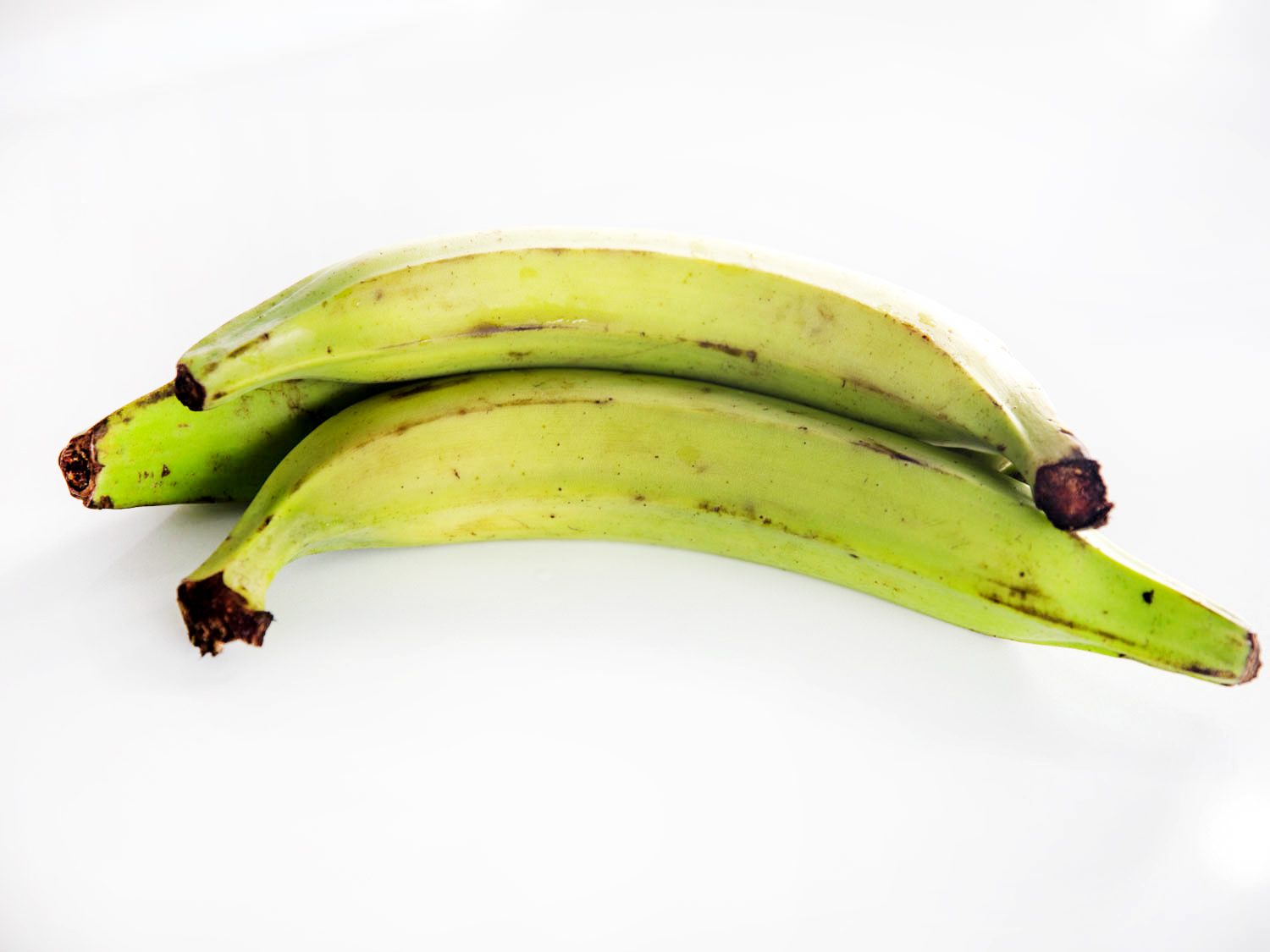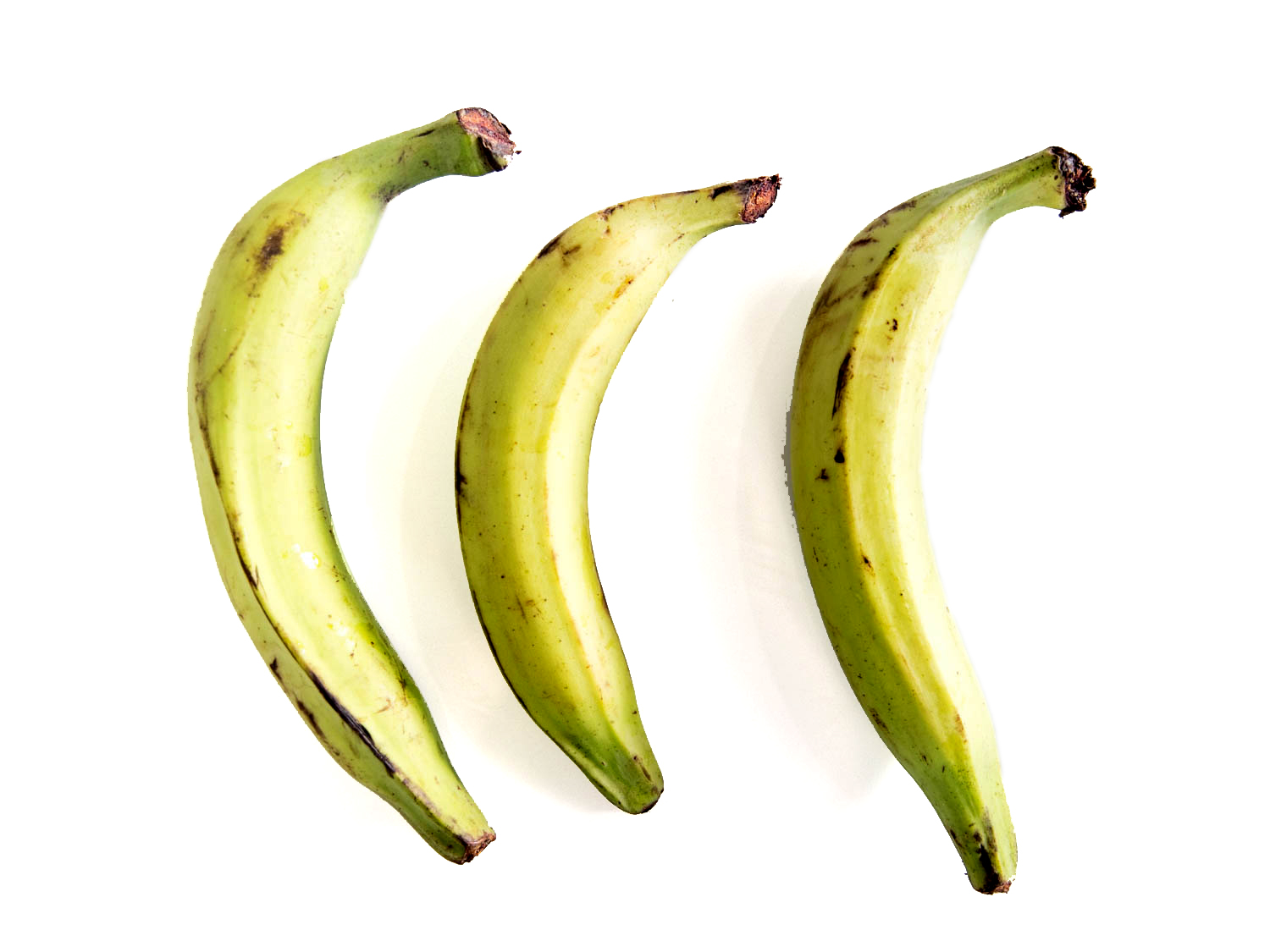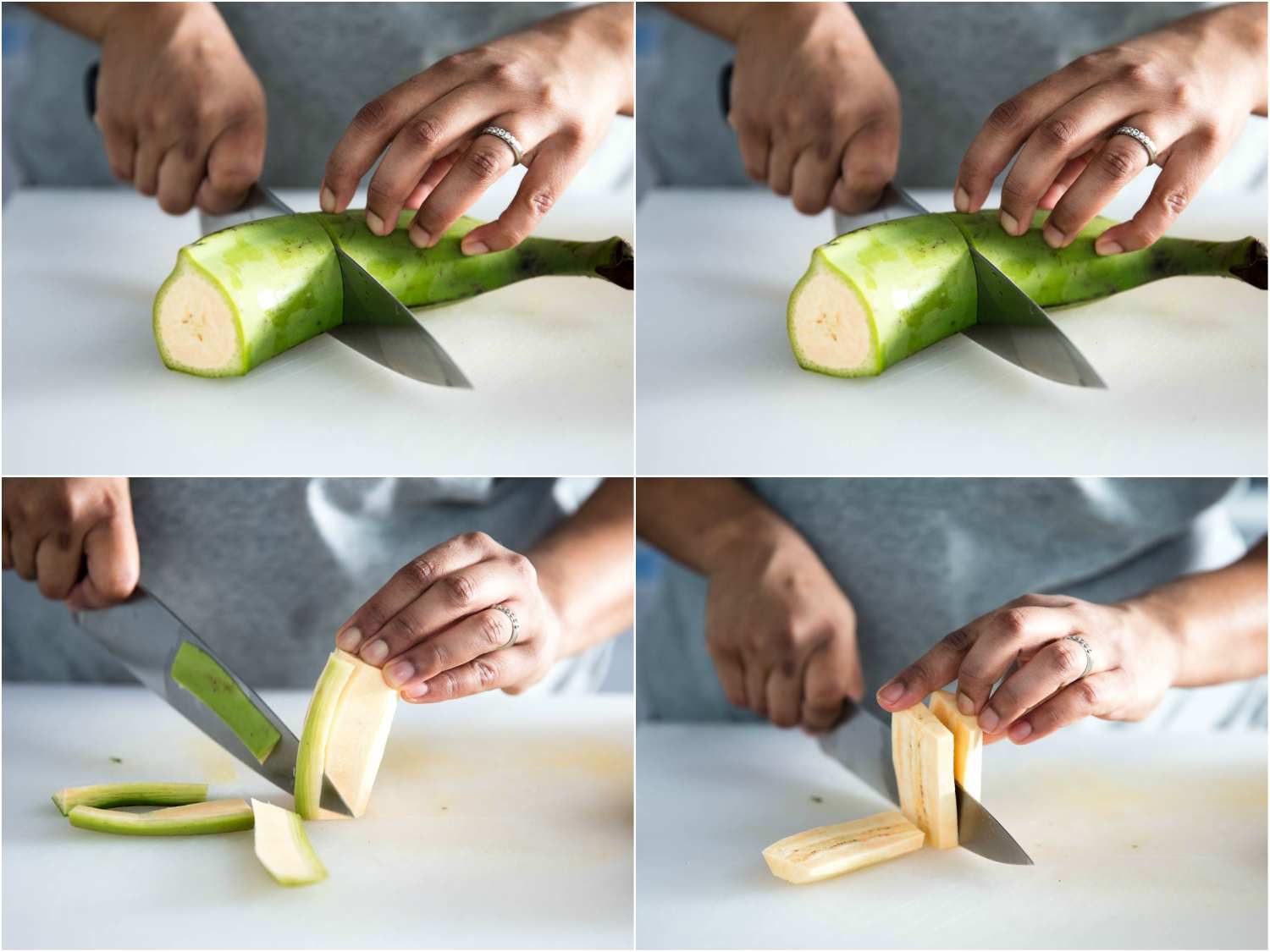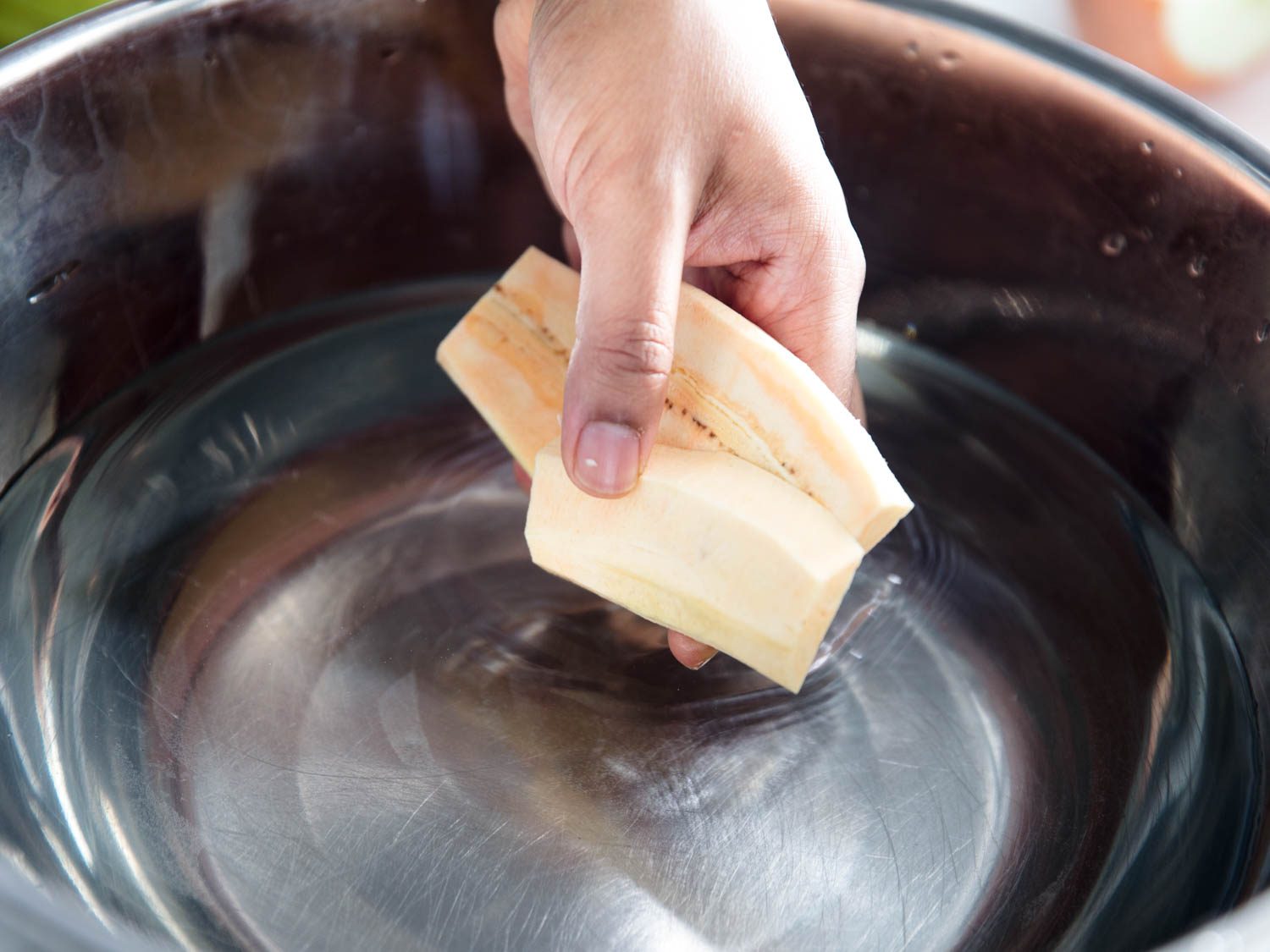[Photographs: Vicky Wasik. Video: Natalie Holt.]
Lately, I’ve been noticing more of banana’s thick-skinned, starchy cousin popping up at my local supermarkets. Although the plantain is a staple ingredient in cuisines around the world, it’s not as popular in America as the banana just yet. However, with its limitless versatility, the plantain should make its way into your cooking repertoire if it hasn’t already.
Treated more like a vegetable than a fruit, plantains can be prepared in various ways depending on their stage of ripeness. Just like a banana, the further the fruit ripens, the more of its starch is converted to sugar. Unlike a banana, plantains contain much more starch than sugar and are almost always served cooked.

Once cooked, unripe green plantains have the dense, starchy texture of taro. They are traditionally braised, fried, or mashed. A green plantain can go anywhere a potato can, making it a great choice to shake up your starch game. Yellow plantains have a bit more sweetness and straddle the line between savory and sweet, while fully ripened black plantains are nearly as sweet as bananas, making them perfect for desserts—try them roasted with cream and sugar .

Though yellow and black plantains can be peeled and prepped much like a banana, the tough skin and sticky sap of the green plantain require a little extra effort. If you attempt to peel a green plantain like a banana, much of the pith from the thick skin will be left behind. This pith does not breakdown during prolonged cooking. Green plantains contain a sticky sap as well, which can be difficult to rinse off, and can stain your clothing and fingernails. Many people, like myself, also have allergic reactions to the sap, so I prefer to minimize contact with my skin while prepping the plaintains.

To peel a green plantain, I first trim the ends before cutting it down to a more manageable size, about three to four inches in length. I next turn each piece upright and slice off the skin with a chef’s knife, much like you would prepare an orange for suprèmes. Once all the pith is removed, I cut the peeled plantain into rounds, planks, or even home fries. Cut plantains will quickly oxidize, so I always have a light brine—a teaspoon of salt for each quart of water—ready to drop the prepped pieces into until I’m ready to use them. The brine prevents oxidation, helps season the plantains, and rinses off any residual sap.

The plantain pieces are now ready to go wherever you want to take them, whether you plan to put them in a traditional Colombian soup or replace your roasted potatoes for one night.
Source link